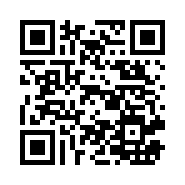Excimer Laser
What is an Excimer Laser? An Excimer Laser is a special type of laser that uses NBUVB light to treat a variety of skin conditions particularly psoriasis and vitiligo. There are multiple manufacturers of excimer lasers. We have been doing these procedures in the office since 2011. We initially had the name brand XTRAC, but in 2014 switched to what we consider to be a superior excimer laser by Ra Medical called Pharos.
What is the procedure like? Excimer laser treatments are painless in-office procedures that are relatively quick and simple compared to other treatments. In our office, the procedure is performed by our medical assistant under the supervision of Dr. Rosenberger. It takes about 10 minutes depending on the size of the area we are treating. The first exposure to the laser is usually quite short, lasting as little as a few seconds. Exposure time depends on the person’s skin type and the thickness of the skin. People with lighter skin start with shorter exposure times than people with darker skin. Normally, treatment times are gradually increased until clearing occurs, unless the last session produced itching and/or skin tenderness. Because administering excimer laser light is not an exact science, each person’s reaction to the light is not completely predictable. Subsequent sessions of excimer laser are adjusted according to a person’s individual response.
How many treatments does it take? That can vary, depending on the disorder being treated, size of the area being treated, location on the body and the thickness of the skin. On average patients will see an excellent result within 10 weeks at twice a week. Many of our patients will do some sort of maintenance therapy at the first appearance of a new flare because they are happy with the therapy. In the past year, we have been using a new protocol that is producing much quicker clearance with improvement often seen in as little as 2-3 weeks.
It is so hard to get an appointment though! No worries. For excimer laser treatments, you will be on a separate medical assistant schedule to assure you super prompt service, with no wait to see Dr. Rosenberger.
How does it work? Present in natural sunlight, ultraviolet light B (UVB) is an effective treatment for a number of skin conditions – psoriasis, eczema, vitiligo, and alopecia areata. UVB treatment involves exposing the skin to an artificial UVB light source for a set length of time on a regular schedule. As we learn more about these diseases, the theories on how UVB is effective constantly change and are clearer. For now, we know it works. In treatment-resistant conditions, just knowing it works is often good enough.
There are two types of UVB treatment, broadband and narrow band. Broad-band UVB is an older method that has been more commonly used in the United States; however, narrow-band UVB is similar in many ways and is becoming more widely used. The major difference between broadband and narrow-band UVB is that narrow-band UVB units emit a more specific range of UV wavelengths. UVB includes all wavelengths of light between 290-320nm. Narrowband UVB (NBUVB) includes only wavelengths between 311-313nm. NBUVB is available both in a light booth and in the Excimer laser. To learn more about NBUVB light booth treatments, check out our phototherapy page.
Who is a candidate for Excimer laser? Excimer laser treatment can be used by adults and children. We often recommend this treatment to patients who have psoriasis in a limited area (hands, feet, scalp) and to those who have been resistant to treatment with topical therapy.
An excimer laser may be used alone or in combination with other topical and systemic treatments. More recently, we have been treating patients with both Otezla and Excimer and seeing some remarkable responses. In patients with vitiligo, we usually recommend augmenting the treatment with topical tacrolimus.
What happens once the skin clears? Once the skin clears, the treatments can be stopped. They should be resumed if the lesions begin to reappear. Sometimes Excimer laser can be continued on a maintenance basis. Studies show that treatment with NBUVB as maintenance can increase remission time.
What are the side effects of Excimer laser treatment? The skin may itch and become red because of exposure to the UVB light. The amount of UVB administered may need to be reduced to avoid further irritation. In our initial years, we would often see some patients develop blistering after treatment. The Pharos laser is a superior device and blistering is very uncommon now. UVB is an established carcinogen (cancer-causing substance or agent) in humans. However, there is no direct evidence of an increased risk of skin cancer from UVB treatment for skin disease. It is important to have a doctor examine your skin periodically. Skin cancers generally can be removed easily if detected early.
Insurance Coverage and Prior Authorization We may ask you to contact your insurance company regarding insurance coverage and prior authorization. The Codes you will need are CPT 96920, 96921, and 96922 depending on the size of the area treated. Generally, it is well covered by most insurances including Medicare for psoriasis. It is less often covered for vitiligo and other skin conditions.
To learn more about this and other treatment options for psoriasis, I would recommend visiting the National Psoriasis Foundation website .
Excimer laser requires a significant time commitment. People get the best results when they keep scheduled appointments and follow treatment directions carefully. We look forward to helping you achieve the clear skin you desire.
If you know someone who may find this article helpful, please share it with them! Follow us on social media this week, and subscribe to our growing YouTube channel! If you would like to receive these posts in your email inbox, Subscribe to our Site.
